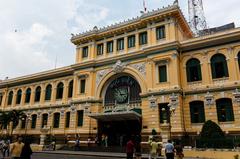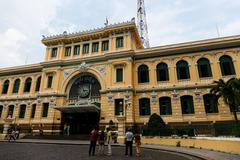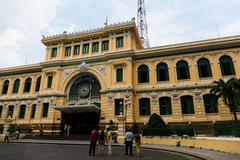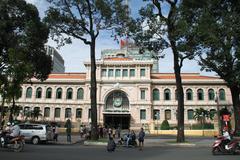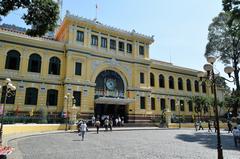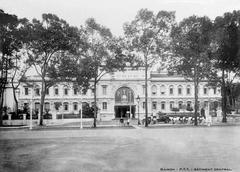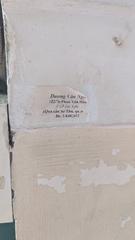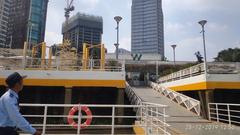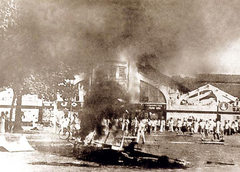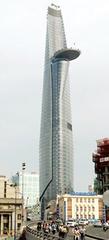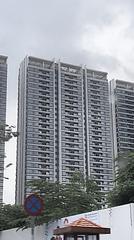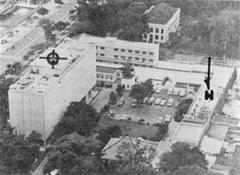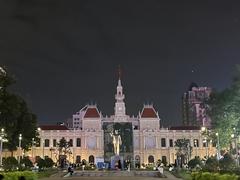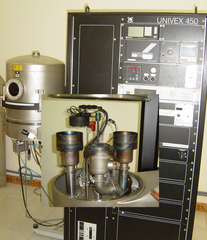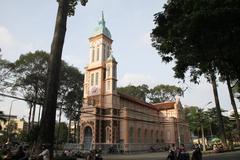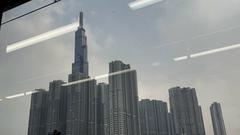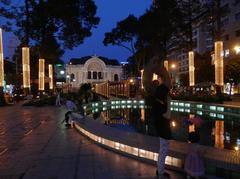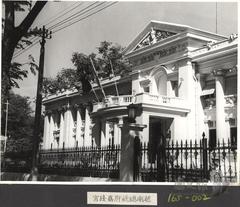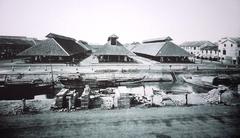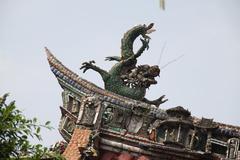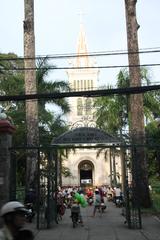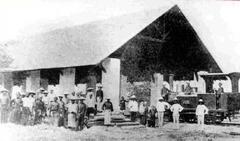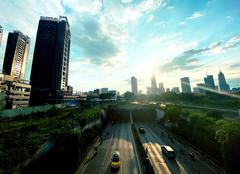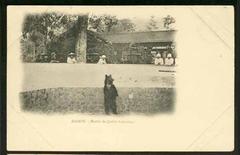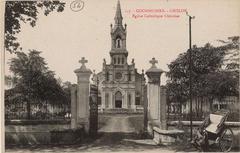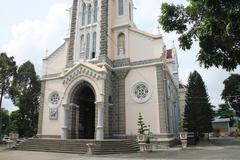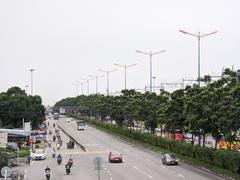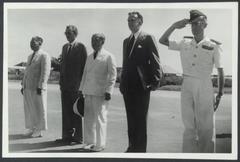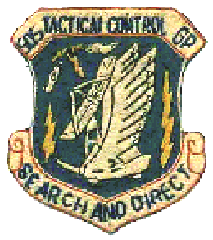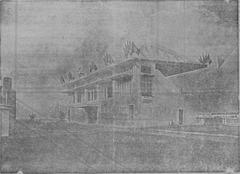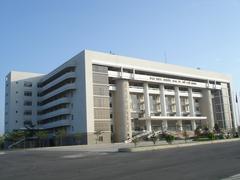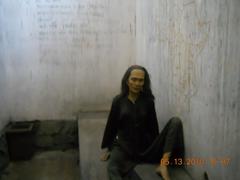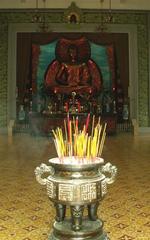
Complete Guide to Visiting Ủy Ban Nhân Dân Quận 1 in Ho Chi Minh City, Vietnam
Date: 18/07/2024
Introduction
The People’s Committee of District 1, or Ủy ban Nhân dân Quận 1, is one of Ho Chi Minh City’s most iconic landmarks, embodying both historical and architectural significance. Nestled in the vibrant heart of Vietnam’s largest city, this building stands as a testament to the region’s colonial past and its journey towards modernity. With origins dating back to the French colonial period, the structure, originally known as the Hôtel de Ville de Saïgon, showcases the intricate design elements typical of French Renaissance architecture. Designed by renowned French architect Paul Gardès and completed in 1908, the building’s ornate façade and central clock tower continue to captivate both locals and tourists alike (Vietnam Guide). This guide aims to provide an in-depth exploration of the People’s Committee of District 1, covering its rich history, architectural marvels, cultural significance, and practical tips for visitors. Through this comprehensive overview, readers will gain a deeper appreciation for this remarkable piece of Ho Chi Minh City’s heritage.
Table of Contents
- Introduction
- Historical Background
- Architectural Significance
- Cultural and Political Significance
- Visitor Tips
- Preservation Efforts
- Nearby Attractions
- Frequently Asked Questions (FAQ)
- Conclusion
Historical Background
The People’s Committee of District 1 is located in the heart of Ho Chi Minh City, Vietnam’s central urban district. Originally constructed during the French colonial period from 1859 to 1954, this building is a testament to the city’s colonial past and its evolution over the years. Designed by French architect Paul Gardès and completed in 1908, the building was initially known as the Hôtel de Ville de Saïgon (Saigon City Hall). Influenced by the French Renaissance style, its ornate façade and intricate details are remarkable.
Architectural Significance
French Colonial Influence
The architectural style of the People’s Committee building exemplifies French colonial architecture, blending European design elements with local materials and techniques. The symmetrical design features a central clock tower, flanked by two wings, with columns, pilasters, and decorative moldings, reflecting the French Renaissance influence.
Structural Design
The building is constructed using a combination of brick and reinforced concrete, providing the necessary strength and durability to withstand Vietnam’s tropical climate. Local materials, such as terracotta tiles for the roof, further integrate the building into its surroundings. The interior boasts grand staircases, high ceilings, and spacious rooms that echo the opulence of the colonial era.
Cultural and Political Significance
Symbol of Colonial Power
During the French colonial period, the Hôtel de Ville de Saïgon served as the administrative center for the colonial government, housing various government offices and symbolizing French colonial power and authority.
Post-Colonial Transformation
After Vietnam gained independence in 1954, the building continued to serve as an important administrative center. Renamed the People’s Committee of Ho Chi Minh City following the reunification of North and South Vietnam in 1975, it now serves as the headquarters of the city’s government.
Visitor Tips
Accessibility
Located in District 1, the People’s Committee building is easily accessible to visitors. It is near several other popular attractions, such as the Notre-Dame Cathedral Basilica of Saigon and the Saigon Central Post Office.
Visiting Hours and Tickets
While the building primarily functions as an administrative office and is not open to the general public, visitors can admire its architecture from the outside. Information on visiting hours and guided tours of the surrounding area can be found on official tourism websites.
Guided Tours and Photography
Guided tours often include a stop at the building, providing historical context and insights. The building’s ornate façade makes it a popular spot for photography. Visitors are encouraged to take photos from the outside, respecting its status as a government office.
Preservation Efforts
Restoration Projects
The People’s Committee building has undergone several restoration projects to preserve its architectural integrity and historical significance. These projects focus on repairing and maintaining the building’s façade, roof, and interior.
Heritage Status
Recognized as a cultural and historical heritage site by the Vietnamese government, the building’s heritage status helps protect it from urban development and environmental damage.
Nearby Attractions
Other nearby attractions include the Notre-Dame Cathedral Basilica of Saigon, the Saigon Central Post Office, and the Ben Thanh Market. These sites offer additional insights into the city’s rich history and culture.
Frequently Asked Questions (FAQ)
What are the visiting hours for the People’s Committee of District 1? The building is not generally open to the public, but you can admire it from the outside at any time. Check official tourism sites for guided tour information.
Is there an entry fee for the People’s Committee of District 1? There is no entry fee as the building is not open to the public. However, guided tours of the surrounding area may have associated costs.
Is the People’s Committee of District 1 wheelchair accessible? As the building itself is not open to the public, accessibility information is limited to the surrounding area, which is generally accessible.
Conclusion
The People’s Committee of District 1 is a significant historical and architectural landmark in Ho Chi Minh City. Its French colonial architecture, cultural and political significance, and ongoing preservation efforts make it an important part of the city’s heritage. Visitors should take the time to admire this iconic building and appreciate its role in the city’s history and development (Vietnam Guide).
References
- Ultimate Guide to Visiting District 1, Ho Chi Minh City - Tips and Top Attractions, 2024, Vietnam Guide Vietnam Guide
- Visitor’s Guide to the People’s Committee of District 1 in Ho Chi Minh City - Hours, Tickets, and Tips, 2024, Vietnam Guide Vietnam Guide
